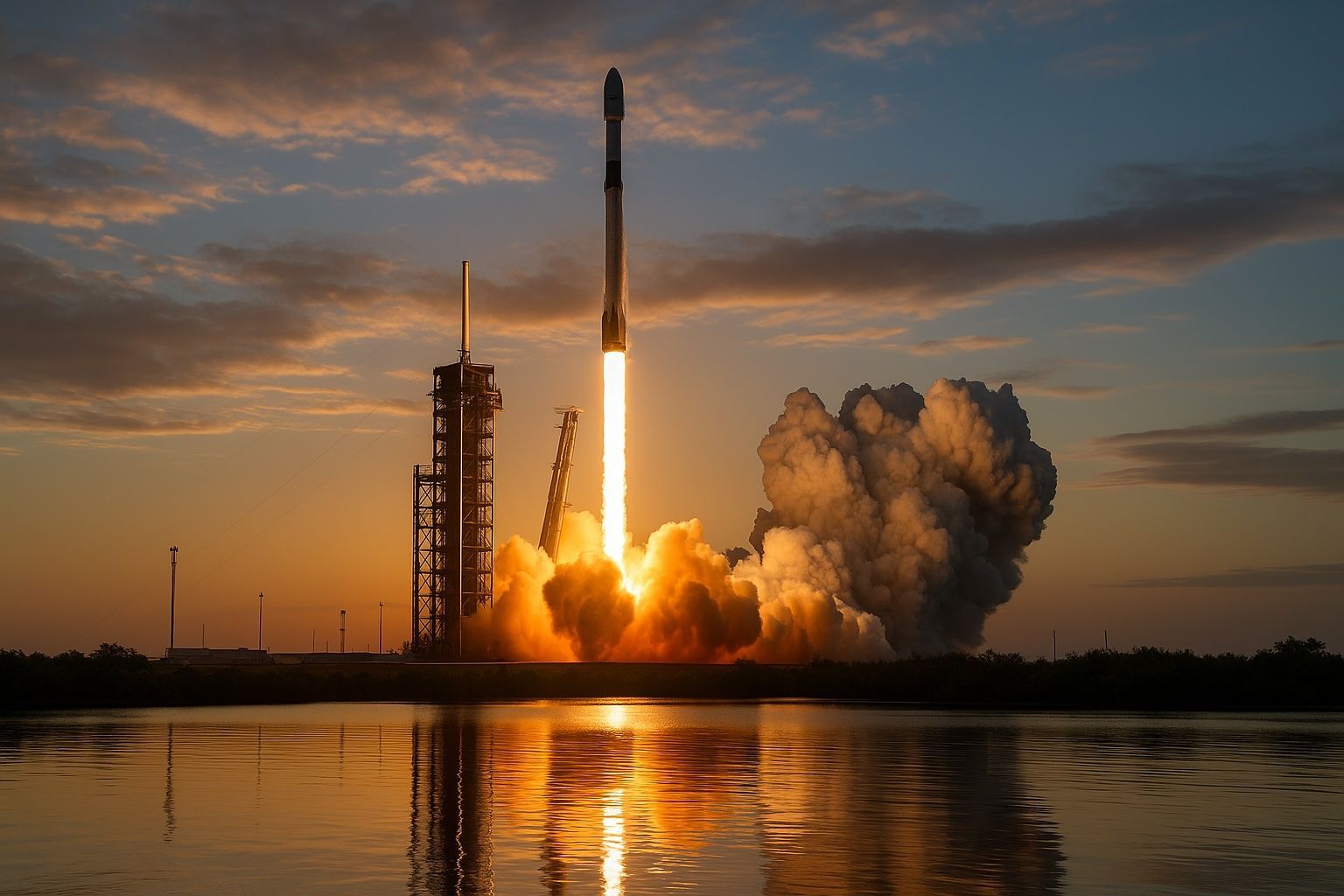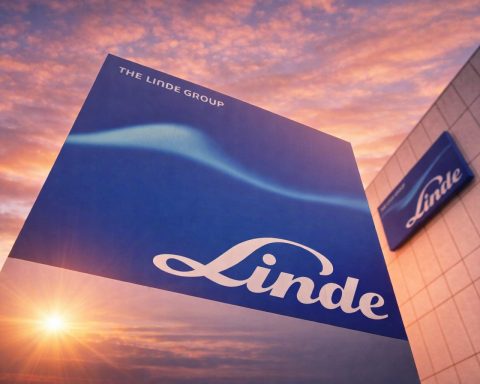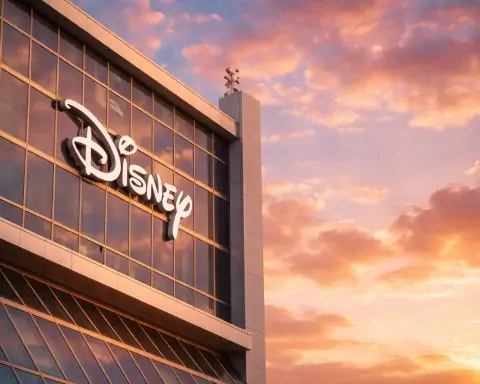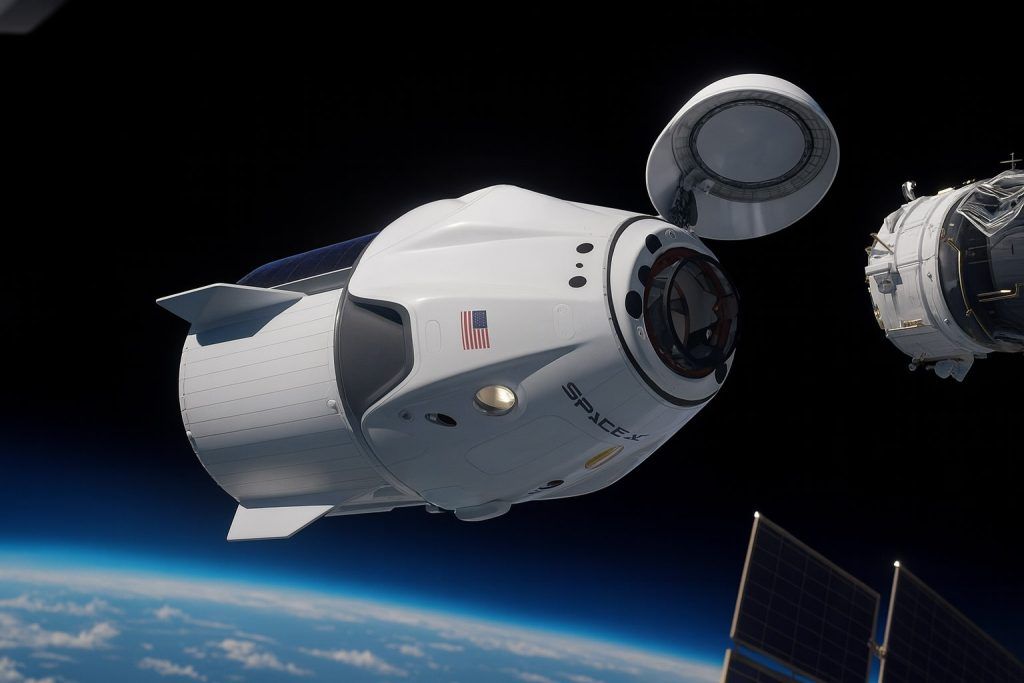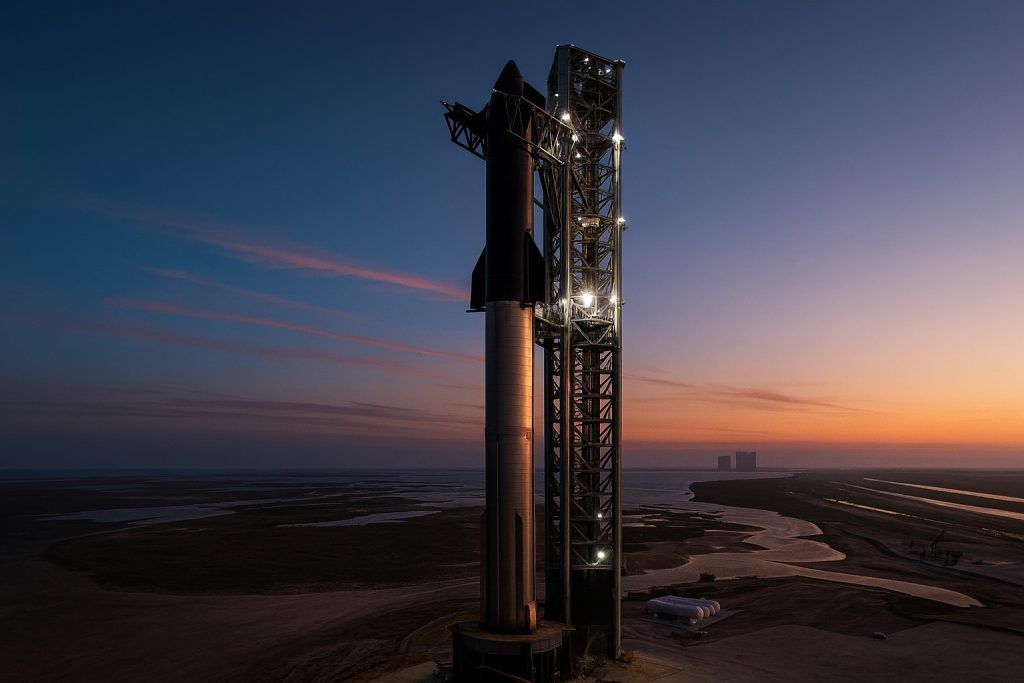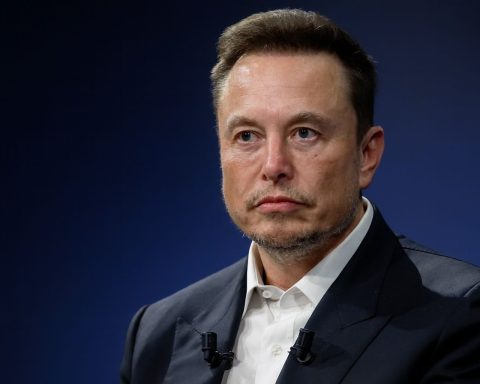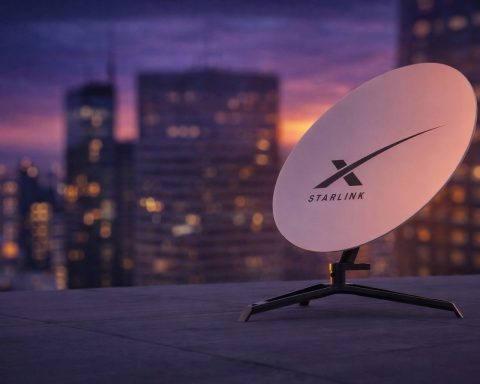- Starship Flight 10, a 400-foot-tall Starship/Super Heavy stack, is scheduled to liftoff Aug. 24 at 7:30 p.m. EDT from SpaceX’s Starbase in Boca Chica, Texas, for its 10th flight test, with a Super Heavy booster equipped with 33 Raptor engines.
- After liftoff, the Super Heavy booster will detach and perform a controlled splashdown in the Gulf of Mexico instead of landing on catch arms, testing a new water-landing engine configuration.
- The Starship upper stage will ignite its own engines to reach space and attempt its first-ever payload deployment, releasing a batch of dummy Starlink satellites.
- SpaceX plans to reignite one of Starship’s six engines during the coast phase to test in-space engine reusability.
- About an hour into flight, Starship will reenter over the Indian Ocean, subjecting its heat shield tiles and steering flaps to extreme reentry conditions.
- This flight would mark the first end-to-end Starship mission with stage separation, payload deployment, engine relight, and atmospheric reentry.
- NASA is watching closely, since Starship is contracted to land Artemis astronauts on the Moon by 2027, making reliability essential for lunar and future Mars ambitions.
- On Aug. 24 at 2:45 a.m. EDT, a Falcon 9 launched the CRS-33 Cargo Dragon from Cape Canaveral to the ISS with over 5,000 pounds of cargo, and the first stage later landed on the drone ship A Shortfall of Gravitas for its 7th flight and recovery.
- The Dragon’s unpressurized trunk contains a boost kit with two Draco thrusters and its own propellant, providing about 1.5 times the reboost capability of a Russian Progress and enabling Dragon to remain docked for nearly five months.
- On Aug. 22, a Falcon 9 from Vandenberg launched 24 Starlink satellites, marking SpaceX’s 102nd Falcon 9 mission of 2025 and pushing the constellation to over 8,100 satellites in orbit while accounting for more than 70% of SpaceX’s 2025 missions.
Starship Flight 10 – High Stakes Test Launch in Texas
SpaceX is poised to launch Starship Flight 10, the next test of its massive Mars-capable rocket, on Sunday evening (Aug. 24) from the Starbase site in South Texas [1] [2]. Liftoff is targeted for 7:30 p.m. EDT (2330 GMT), the start of a one-hour launch window, with the 400-foot-tall Starship/Super Heavy vehicle stacked on the pad and ready for its tenth flight test [3] [4]. Stakes are high – SpaceX has suffered a streak of Starship failures this year, including three test flights that failed after liftoff and a test-stand blast in June, and is aiming for the first fully successful Starship mission of 2025 [5] [6]. Elon Musk’s team has upgraded Starship’s design with a more resilient heat shield and stronger flaps to improve its chances of surviving reentry – key steps toward the rapid reusability Musk envisions for future Mars missions [7]. SpaceX even announced that this flight will push the envelope on Starship’s reentry: “Starship’s reentry profile is designed to intentionally stress the structural limits of the upper stage’s rear flaps” at the toughest moment of descent [8].
If all goes to plan, Starship Flight 10 will achieve several long-sought milestones. After launch, the Super Heavy booster (equipped with 33 Raptor engines) will detach and forgo a landing on catch arms – instead performing a controlled splashdown in the Gulf of Mexico to test a new water-landing engine configuration [9] [10]. Meanwhile the Starship upper stage will ignite its own engines to reach space and attempt its first-ever payload deployment, releasing a batch of dummy Starlink satellites to simulate deploying SpaceX’s next-gen satellites in orbit [11]. SpaceX also plans to reignite one of Starship’s six engines during the coast phase, another critical test for in-space engine reusability [12] [13]. About an hour into flight, Starship will try to reenter Earth’s atmosphere over the Indian Ocean, subjecting its heat shield tiles and steering flaps to blazing conditions that have destroyed previous prototypes [14] [15]. Notably, this would be the first Starship to attempt an end-to-end flight profile with stage separation, payload deployment, engine relight, and atmospheric reentry. SpaceX is eager to finally demonstrate these capabilities after the last attempt (Flight 9 in May) failed to deploy its payload and lost control during reentry [16] [17]. Musk is expected to provide a public update on Starship’s progress before launch, underscoring the importance of this test [18]. NASA is watching closely too – the agency has contracted Starship to land Artemis astronauts on the Moon by 2027, so proving Starship’s reliability is a must for both lunar and future Mars ambitions [19] [20]. SpaceX received FAA clearance for this launch after concluding mishap investigations, and crowds of space fans and locals are set to gather near Boca Chica Beach to witness the historic flight if weather and last-minute checks cooperate (the launch window has a backup opportunity until 8:30 p.m. EDT) [21] [22].
Dragon Resupply Mission Boosts the ISS
In the early hours of Sunday Aug. 24, SpaceX successfully launched a Falcon 9 rocket carrying its CRS-33 Cargo Dragon spacecraft, kicking off a crucial resupply mission to the International Space Station (ISS) [23]. The Falcon 9 lifted off at 2:45 a.m. EDT from Cape Canaveral, Florida, lofting over 5,000 pounds of food, equipment and science experiments for the station’s crew [24] [25]. About 8½ minutes later, the Falcon 9’s first stage booster nailed a landing on the drone ship A Shortfall of Gravitas in the Atlantic, marking the 7th flight and recovery for this reusable booster [26]. (It was the company’s 492nd overall booster landing to date, a reminder of how routine SpaceX has made rocket reuse [27].) The Dragon capsule – making its third trip to orbit – is scheduled to dock with the ISS on Monday morning (Aug. 25) [28]. Notably, upon arrival it will become the 50th Dragon spacecraft ever to reach the ISS, a milestone in SpaceX’s partnership with NASA [29]. SpaceX’s Director of Dragon Mission Management, Sarah Walker, reflected on the program’s impact, saying these missions have now delivered “well over 300,000 pounds of cargo” and over 1,000 research projects to the orbiting lab, contributing immensely to science on Earth and in space [30].
What sets this mission apart is a new capability to boost the ISS’s orbit – something previously done only by Russian spacecraft. Tucked in the unpressurized trunk of Dragon is a “boost kit” with two Draco thrusters and its own propellant supply, designed to periodically raise the ISS altitude [31] [32]. NASA is testing this now because Russia’s Progress capsules, which handle station reboosts, may retire as soon as 2028, so a U.S. system is needed to help maintain the ISS through 2030 [33] [34]. “The hardware located inside the trunk of Dragon contains an independent propellant system…to fuel two Draco engines,” explained Bill Spetch, ISS integration manager at NASA, adding that “the boost kit will help sustain the orbiting lab’s altitude” with a series of burns planned throughout the fall [35]. Those engine firings won’t begin until September, after Dragon is attached to station, but the mission is already a first: Dragon will remain docked for nearly five months, far longer than any prior cargo Dragon, specifically to perform multiple reboosts over time [36] [37]. “It’s been exciting for us to support this critical new effort – it feels like we’re becoming an even more integrated part of ISS operations,” SpaceX’s Sarah Walker said of the extended mission [38] [39]. NASA officials noted the Dragon’s boost kit can provide about 1.5 times the reboost capability of a Russian Progress vehicle [40], taking on the “vast majority” of station-raising maneuvers during its stay. This joint effort will also inform SpaceX’s work on a future U.S. Deorbit Vehicle – a special craft SpaceX is contracted to develop by 2028 to safely deorbit the ISS at mission end [41] [42].
In addition to supplies, Dragon brought a trove of science experiments to the ISS. More than 50 investigations and tech demos are packed aboard, ranging from biomedical studies to materials science [43]. NASA highlighted several cutting-edge projects: for example, an experiment with bone-forming stem cells to research osteoporosis treatments, a bioprinted human liver tissue study to observe blood vessel growth in microgravity, and a 3D metal printing experiment to advance in-space manufacturing [44] [45]. Another quirky cargo item got attention – tortillas! In a prelaunch briefing, NASA’s Bill Spetch noted this mission carries 1,500 fresh tortillas (in 14 special bags) for the crew, humorously explaining that tortillas are ideal for zero-G dining because they don’t crumble like bread [46] [47]. The Cargo Dragon (capsule C211) will remain part of the ISS until early 2026, supporting these experiments and executing reboost burns. If all goes well, Monday’s docking will mark yet another successful collaboration between SpaceX and NASA, as this mission inaugurates a new era of station-keeping by commercial spacecraft [48] [49].
Starlink Deployments Drive Record Launch Cadence
SpaceX’s Starlink mega-constellation continues to grow at a blistering pace. On Friday, Aug. 22, a Falcon 9 rocket from Vandenberg Space Force Base in California launched 24 new Starlink internet satellites into orbit [50]. The midday launch (at 10:04 a.m. local time) was SpaceX’s 102nd Falcon 9 mission of 2025, an astonishing figure that underscores the company’s unprecedented launch cadence [51] [52]. The rocket’s first stage – on its 17th flight – landed safely on the Pacific drone ship Of Course I Still Love You about 8½ minutes after liftoff [53] [54]. SpaceX confirmed deployment of all 24 satellites about an hour later, adding them to the ever-expanding Starlink network [55]. With this flight, over 8,100 Starlink satellites are now in orbit providing global broadband coverage, by far the largest satellite fleet ever assembled [56]. Starlink launches have dominated SpaceX’s manifest – more than 70% of SpaceX’s 2025 missions have been Starlink dedicated flights [57] – enabling the company to rapidly fill its second-generation constellation. The scale is so massive that since 2020 SpaceX alone accounts for a huge share of all satellites put into space [58]. As one space industry columnist noted, rivals from Amazon to international agencies are racing to match Starlink’s head start, but “scale is crucial” and SpaceX’s heady pace will be difficult to beat [59] [60].
This relentless launch tempo has SpaceX breaking its own records. By mid-August, SpaceX reached 100 launches for the year – a milestone it didn’t hit last year until late October [61]. “For reference on the increase in launch rate from last year, we hit 100 on Oct. 20 in 2024,” SpaceX vice president Kiko Dontchev noted on social media as the 100th launch (a Starlink mission) blasted off [62]. In 2024 the company achieved 134 orbital launches in total, the most of any operator in history [63]. Now in 2025, SpaceX is on track to shatter that record – it aims for up to 170 missions by year’s end, a target Musk’s team set to meet surging demand for satellite deployment [64]. The ambition is bold but so far on schedule: as of Aug. 24, SpaceX has flown 102 missions in less than eight months [65], averaging a launch every ~2.5 days. Much of this activity fuels Starlink’s expansion, which Musk has identified as the company’s primary revenue driver [66]. (He has hinted that Starlink could be spun off in a public IPO once its cash flow stabilizes [67], and in late 2023 he announced Starlink was finally cash-flow positive after years of investment [68].) The public is certainly taking note of SpaceX’s feats – official posts of each launch routinely rack up millions of views on X (Twitter). When SpaceX marked the 100th launch with a celebratory tweet on Aug. 18, it garnered over 10 million views and thousands of jubilant replies, illustrating how the company’s rapid-fire launch schedule has captured popular imagination [69].
Starlink isn’t just growing in space; it’s also expanding its customer footprint on the ground. In recent days, SpaceX activated Starlink service in Israel, marking the network’s entrance into another new national market [70]. The Israeli Ministry of Communications confirmed that Starlink is now live in the country, with SpaceX rolling out local installation of user antennas and a Hebrew-language ordering portal [71]. Residential Starlink plans in Israel start at about ₪230 per month (≈$62 USD) for unlimited data, according to the official price list, with higher-tier packages offering prioritized bandwidth for business users [72]. Local reports noted that while Israel already has extensive fiber-optic internet coverage, Starlink could appeal to rural and remote communities or as backup connectivity in emergencies [73]. The Israeli launch follows Starlink’s rapid international growth – the satellite service is now available in over 100 markets worldwide and was recently approved in countries ranging from Pakistan to El Salvador (expansions announced in August). On social media, Elon Musk touted Starlink’s role in connecting areas “without traditional internet,” and users in newly served regions have been sharing photos of their Starlink dish setups as the system comes online. Together with SpaceX’s high launch rate, these developments show how Starlink is maturing from an experimental constellation into a global broadband backbone, one that is increasingly entwined with both commercial and geopolitical trends (from rural connectivity to providing communications in conflict zones). Each Falcon 9 full of Starlink satellites not only bolsters SpaceX’s bottom line, but also underscores the company’s lead in the new space race to blanket Earth in connectivity [74] [75].
Musk and SpaceX: Financial and Industry News
SpaceX’s whirlwind weekend of launches and tests comes amid major moves on the business front. Elon Musk – who has been running SpaceX while also helming X (Twitter) and Tesla – surprised observers recently by saying he’s back to “working 7 days a week and sleeping in the office” to drive his ventures forward [76]. For SpaceX, all that hustle is yielding remarkable financial momentum. Musk told investors that SpaceX’s revenue in 2025 will reach roughly $15.5 billion – a record high – thanks largely to booming demand for its launch services and Starlink subscriptions [77] [78]. In fact, SpaceX’s revenue from commercial space ventures is now on par with or higher than NASA’s own space operations budget [79], highlighting how dominant the company has become in the space sector. The valuation of SpaceX reflects these fortunes: according to insider reports, SpaceX is in talks for a new share sale that would value the private company at about $400 billion [80]. (For context, that’s nearly double the market cap of Boeing.) This staggering valuation – reported by Bloomberg and cited by Reuters – would make SpaceX one of the most valuable privately-held companies in the world [81]. Investors seem eager to buy in, betting on SpaceX’s growth in everything from satellite internet to lunar landers. Musk has hinted that no public IPO is imminent for SpaceX itself (preferring to keep control), but he did indicate Starlink might be spun off to public markets once steady profitability is achieved [82].
On the regulatory side, SpaceX has been clearing hurdles to sustain its growth. Earlier this year, the U.S. Federal Aviation Administration (FAA) completed an exhaustive review and approved an increase in Starship launch frequency from SpaceX’s Texas launch site, allowing up to 25 Starship flights per year (up from just 5) without significant new environmental impact [83] [84]. That environmental approval – announced in May after years of study – was a key green light for SpaceX’s Starship program, which had drawn scrutiny from conservation groups near Boca Chica. The FAA’s decision even requires SpaceX to contribute to beach cleanups and wildlife monitoring to offset its launch effects [85]. More recently, just ahead of Flight 10, the FAA officially cleared SpaceX to launch Starship again after reviewing the mishap from Flight 9, determining that SpaceX’s mitigations were sufficient for the next test [86] [87]. SpaceX’s ability to secure regulatory clearance relatively quickly is critical to its “launch fast, fix fast” approach – and it also speaks to the strong government interest in Starship’s success (NASA, for one, needs Starship for Moon missions on a tight timeline). Meanwhile, SpaceX’s presence in Texas is literally growing: local employees and residents voted to incorporate the company’s Starbase area as an official town (tentatively called “Starbase, TX”), giving SpaceX greater control over the land and operations there [88]. This unique company-town arrangement, combined with SpaceX’s expanding launch pads in Florida and California, exemplifies how the firm is reshaping the infrastructure of the space industry.
Finally, in the wider industry SpaceX’s influence is prompting both collaborations and rivalries. Just this month, Amazon’s Project Kuiper satellites flew for the first time on a SpaceX Falcon 9 (after several delays) – a notable partnership given that Kuiper is a direct competitor to Starlink. At the same time, SpaceX’s prolific launch record is pressuring other launch providers: small-rocket startups are struggling to match its reliability and cost, and even established players like ULA and Arianespace face an aggressive pace set by SpaceX’s reuse model. In a Reuters analysis, one aerospace expert quipped that “financial liftoff might be trickier” than rocket liftoff for SpaceX’s would-be imitators, pointing to the high burn rate of cash in the launch business and noting that SpaceX’s scale (26× revenue at a $400B valuation) dwarfs its peers [89]. Indeed, while companies like Rocket Lab, Firefly, and Blue Origin are making strides, SpaceX remains the center of gravity in the commercial space sector – launching the most satellites, winning major government contracts (such as a role in the Pentagon’s “Starshield” missile-defense project [90]), and even setting policy debates (Musk’s use of Starlink in conflict zones has drawn government attention). As the weekend’s events show, SpaceX is firing on all cylinders: testing its biggest rocket, resupplying the ISS, deploying dozens of satellites, and pushing the boundaries of reusable rocketry – all at the same time. It’s a remarkable snapshot of a company at full throttle, aiming to make history in orbit and beyond.
Sources: SpaceX/Reuters; Space.com; Spaceflight Now; Jerusalem Post; Reuters newswire [91] [92] [93] [94].
References
1. www.reuters.com, 2. www.space.com, 3. www.reuters.com, 4. www.space.com, 5. www.space.com, 6. www.reuters.com, 7. www.reuters.com, 8. www.reuters.com, 9. www.reuters.com, 10. www.reuters.com, 11. www.reuters.com, 12. spaceflightnow.com, 13. spaceflightnow.com, 14. www.reuters.com, 15. www.space.com, 16. spaceflightnow.com, 17. spaceflightnow.com, 18. www.reuters.com, 19. www.reuters.com, 20. www.space.com, 21. www.space.com, 22. www.space.com, 23. www.space.com, 24. www.space.com, 25. www.space.com, 26. www.space.com, 27. spaceflightnow.com, 28. www.space.com, 29. spaceflightnow.com, 30. spaceflightnow.com, 31. spaceflightnow.com, 32. spaceflightnow.com, 33. www.space.com, 34. spaceflightnow.com, 35. spaceflightnow.com, 36. spaceflightnow.com, 37. spaceflightnow.com, 38. spaceflightnow.com, 39. spaceflightnow.com, 40. spaceflightnow.com, 41. spaceflightnow.com, 42. spaceflightnow.com, 43. spaceflightnow.com, 44. www.space.com, 45. spaceflightnow.com, 46. spaceflightnow.com, 47. spaceflightnow.com, 48. spaceflightnow.com, 49. spaceflightnow.com, 50. www.space.com, 51. www.space.com, 52. www.space.com, 53. www.space.com, 54. www.space.com, 55. www.noozhawk.com, 56. www.space.com, 57. www.space.com, 58. www.reuters.com, 59. www.reuters.com, 60. www.reuters.com, 61. www.noozhawk.com, 62. www.noozhawk.com, 63. www.reuters.com, 64. www.reuters.com, 65. www.space.com, 66. www.reuters.com, 67. www.reuters.com, 68. www.reuters.com, 69. x.com, 70. www.waryatv.com, 71. www.waryatv.com, 72. www.waryatv.com, 73. www.waryatv.com, 74. www.reuters.com, 75. www.reuters.com, 76. www.reuters.com, 77. www.reuters.com, 78. www.reuters.com, 79. www.reuters.com, 80. www.reuters.com, 81. www.reuters.com, 82. www.reuters.com, 83. www.reuters.com, 84. www.reuters.com, 85. www.reuters.com, 86. x.com, 87. www.teslaoracle.com, 88. www.reuters.com, 89. www.reuters.com, 90. www.reuters.com, 91. www.reuters.com, 92. www.space.com, 93. www.space.com, 94. www.reuters.com
